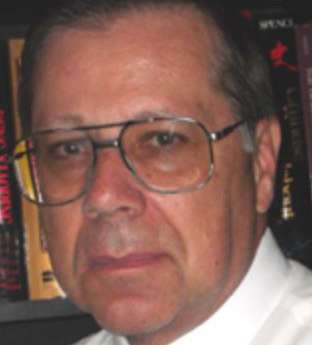
By JOHN RICHARD SCHROCK
“You are the only teacher I have ever known who has asked for more students,” replied the headmaster. It was the week before classes were to start at the international school in Hong Kong. My biology classroom had 30 student seats in the room, facing a blackboard. Back beyond their seats was a biology laboratory with 30 lab stools around lab islands with sinks. No wall separated what would normally have been two separate rooms. It was a design that allowed me to move directly from explaining a concept to students doing lab work involving that concept.
My students worked in pairs. There were 15 stereo-microscopes and 15 monocular microscopes equipped with a full range of objectives, lenses with magnifying power from low to oil-immersion for inspecting the smallest of bacteria. These were research-grade German Zeiss and Leica microscopes costing over a thousand dollars apiece. And for the wide range of other lab lessons dealing with animals and plants and human anatomy, I had the equipment to serve 30 students in each class.
Teachers had just received our class rosters. Some of my classes only had 22 or 26 students. I was equipped for 30. And that is where my request for more students came from. We were equipped to handle 30 and anything less meant resources were being wasted.
As a teacher, I valued working with students. And the number of students I taught was an indicator of the potential lives that I could change by increasing their understanding of science. Some would become motivated to pursue a career in biology. But all would benefit from understanding their own anatomy and physiology, and appreciating the animal and plant world around them. While I did not necessarily “reach” every student with these goals, I did consider the number of students that I taught to be a measure of my productivity to society.
If the rooms were bigger and we had equipment for 36 or 40 students, I would have wanted even more students. Eight years earlier, when I began teaching in Kentucky, my teaching load approached 40 per class, but we had no laboratory experiences for them beyond what a teacher could demonstrate at the front desk. With class assignments of 5 or 6 classes, and with class sizes of 20 to 40 students, I generally taught from 120 to 180 students per school year.
That became a concern when I decided to pursue a doctorate in order to train future biology teachers. There were bad policies emerging in education. Teaching at the university level, I might be able to enter the debate and preserve teacher professionalism. But each year that I spent as a doctoral student would mean I would not be teaching 120-to-180 students. Every year in graduate school, I counted up the students I had “lost” from not being in the classroom.
Colleagues would console me that I could catch back up teaching in large lecture halls at college. But large lecture halls are institutionalized malpractice. Only the students who sit in the front 6-or-7 rows where an instructor can “read” their eyes and determine if they are “in the moment” and understanding the concept are truly in class. Students at the back of a large lecture hall are often mentally elsewhere.
“But you can reach many more via televised lessons,” others would note. But that fraudulent medium—whether synchronous with the students, or asynchronous anytime-anywhere—was soon proven ineffective, just as modern digital screen media have failed during this pandemic.
Teachers must know their students, and students must know that their teachers know them. That places an upper limit on students-per-class for genuine teaching to take place. There are likewise important interactions where students learn from each other working in labs together. And this does not work well when numbers are too high.
Today, this becomes a crisis when middle and high schools face a severe shortfall of well-trained teachers. Some of our best teachers teach in schools where class size is a dozen or less. Consolidation and other strategies could increase their student production and boost future national science literacy.
But good teachers also require support from competent school administrators. And that is becoming an even greater shortfall.





